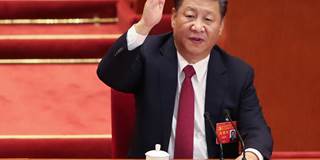China’s leaders are right that the country's governance must be modernized. But, to succeed, they may need to take a risky step, loosening their control over the activities of local governments – and thus over the economy – and introducing greater downward accountability.
SHANGHAI – Five years ago, China’s leaders decided to target modern state governance as a top reform priority. The goal of such reform is to improve the state’s capacity to adapt to the sheer size and increasing complexity of the Chinese economy, and to mitigate risk. Achieving this objective will not be easy.
To understand why, and what it will take to succeed, consider how Chinese governance has worked in recent decades. Overall, governing the country involves a combination of political centralization and economic decentralization. In particular, China’s spectacular income growth has been enabled by a delicate balance between the concentration of political power in the hands of the central leadership and the delegation of economic management to local authorities.
This balance has often proved difficult to maintain. For example, when China still had a fully planned economy, Mao Zedong had to delegate the management of state-owned enterprises (SOEs) to local authorities for some time in order to boost production, as local governments were in a better position than the industrial ministry in Beijing to manage local suppliers. But, within a few years, this system had become so disorganized, due to economic chaos in the wake of decentralization, that the central government reasserted its control.

SHANGHAI – Five years ago, China’s leaders decided to target modern state governance as a top reform priority. The goal of such reform is to improve the state’s capacity to adapt to the sheer size and increasing complexity of the Chinese economy, and to mitigate risk. Achieving this objective will not be easy.
To understand why, and what it will take to succeed, consider how Chinese governance has worked in recent decades. Overall, governing the country involves a combination of political centralization and economic decentralization. In particular, China’s spectacular income growth has been enabled by a delicate balance between the concentration of political power in the hands of the central leadership and the delegation of economic management to local authorities.
This balance has often proved difficult to maintain. For example, when China still had a fully planned economy, Mao Zedong had to delegate the management of state-owned enterprises (SOEs) to local authorities for some time in order to boost production, as local governments were in a better position than the industrial ministry in Beijing to manage local suppliers. But, within a few years, this system had become so disorganized, due to economic chaos in the wake of decentralization, that the central government reasserted its control.